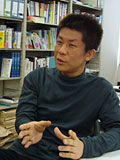On November 3rd, I witnessed one of the greatest examples of communicating science that I have ever seen. That evening, the University of British Columbia (UBC) was the lucky host to one of the most influential Canadians of our time: David Suzuki. He presented a lecture entitled “The Global Eco-crisis: Is it too late?”

Who is David Suzuki?
If you have been living under a rock for the past few decades, you wouldn’t know that David Suzuki is one of the most well-known activists for reversing climate change, writing many books and hosting several TV shows on the subject. Most notably, he hosted the Canadian TV series, “The Nature of Things.” In 1990, David Suzuki co-founded the “David Suzuki Foundation,” a non-profit organization, which focuses on sustainability and climate change.
As David Suzuki braced the speaking podium, I prepared myself to be changed.
Humans are unique
David Suzuki began to trace the origin of humans from our common ancestors in Africa to today. What made humans unique, he claimed, was their foresight. That is, our innate ability to predict or plan the future. He explained that humans moved from Africa to eventually cover the world. Using our foresight, we exploited the resources of every location, only to move on when those resources were depleted.
Laws that we CAN change
Dr. Suzuki went on to describe the so-called “laws” that we have imposed on society today, specifically, a “law” called capitalism. But, he said, “laws” like capitalism aren’t really laws at all but they are “nuts!” because we can change them. With capitalism, economists rule the world and they just don’t give a “shit” about our environment and what we do to it. It is time that we change these laws and take control back from the economists. To do so, we have to take back our government and make it more representative. Vote.
Stop the excuses!
Moving on to current efforts being made, David Suzuki claimed that our government is full of excuses. As an example, he discussed the carbon tax. In Canada, we claimed that our businesses couldn’t survive a $15/ton carbon tax. But in Sweden, their business are doing just fine with a $120/ton carbon tax. It is time that we stop making excuses and get to work.
Never too late

Inspiring us, David Suzuki concluded that it isn’t too late. We can save our environment but first, we have to take back our government and the only way to do that is to vote. You may just feel like a drop in a bucket but he reminded us, with enough drops, we can fill the bucket.
From this lecture, I didn’t just learn that we need to change our environment but I also learned how to connect with your audience. David Suzuki kept the science basic and used language that was not only fun (there were more than a few swear words…) but easy to understand.
David Suzuki left me stirred.



